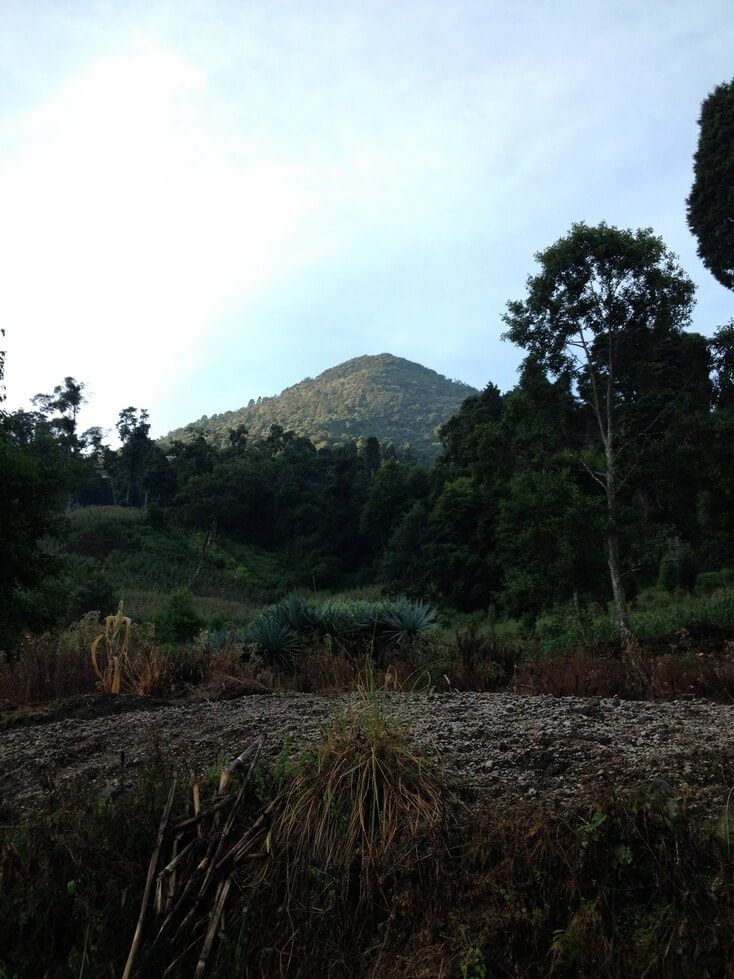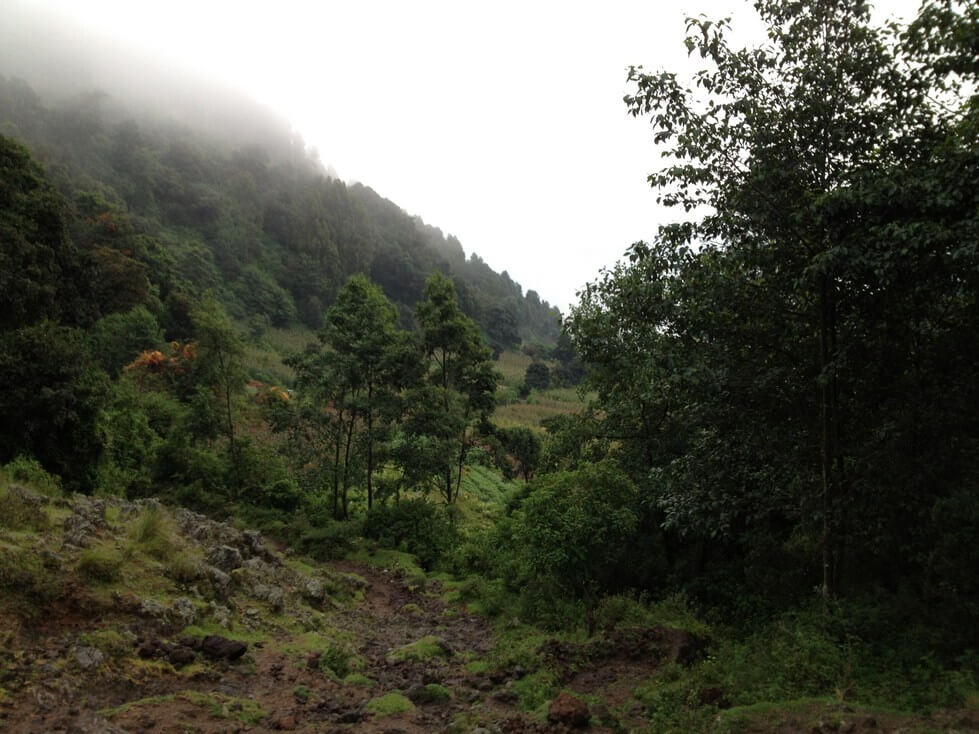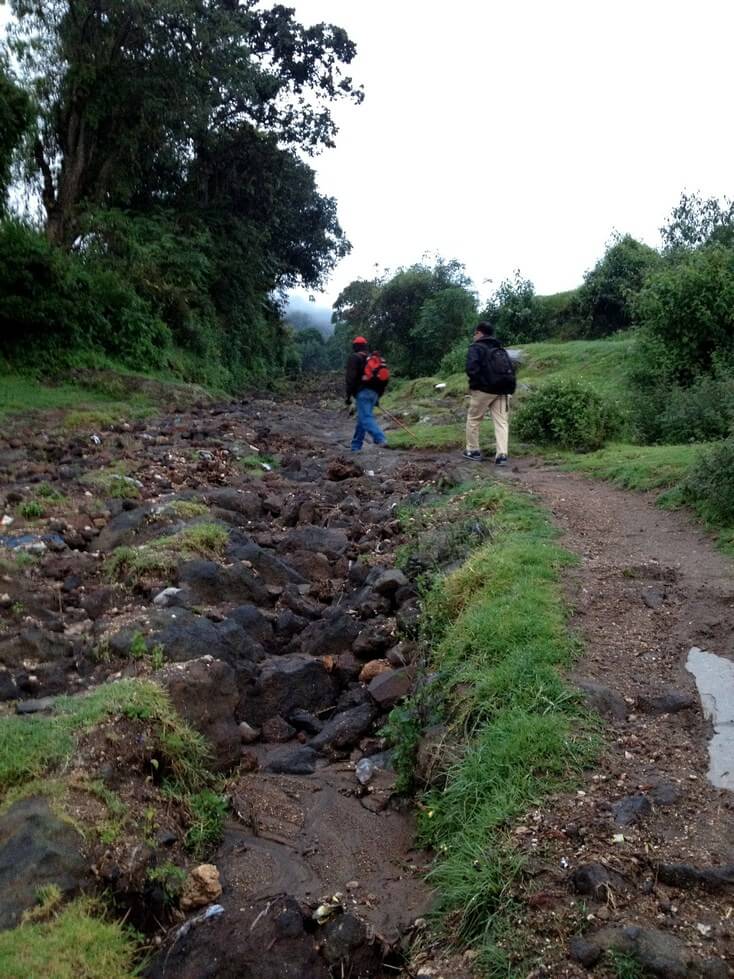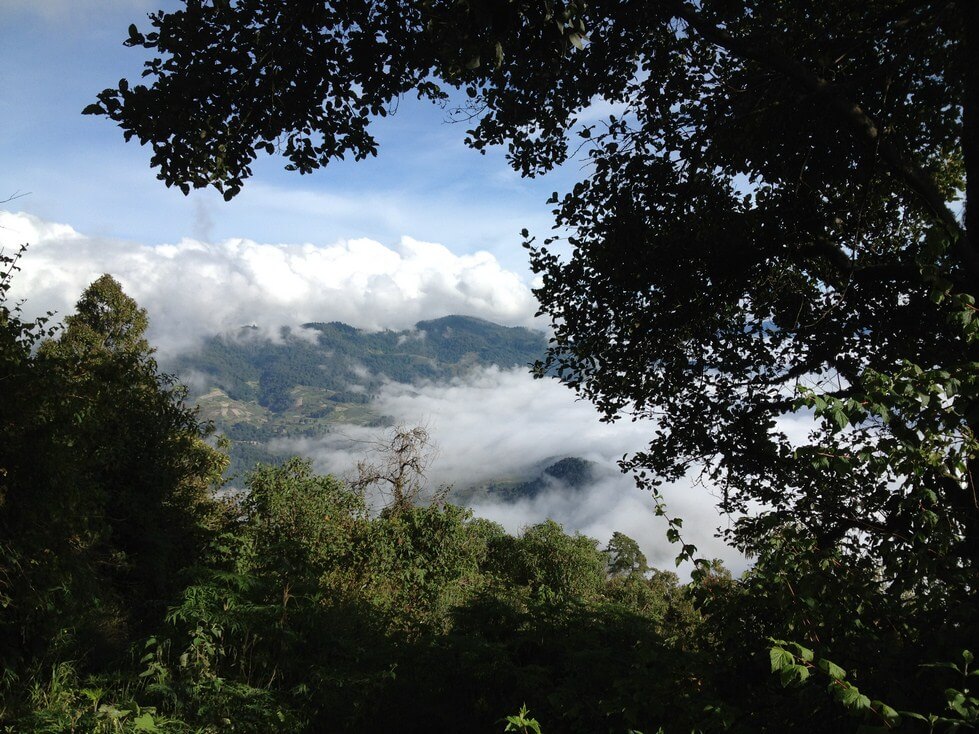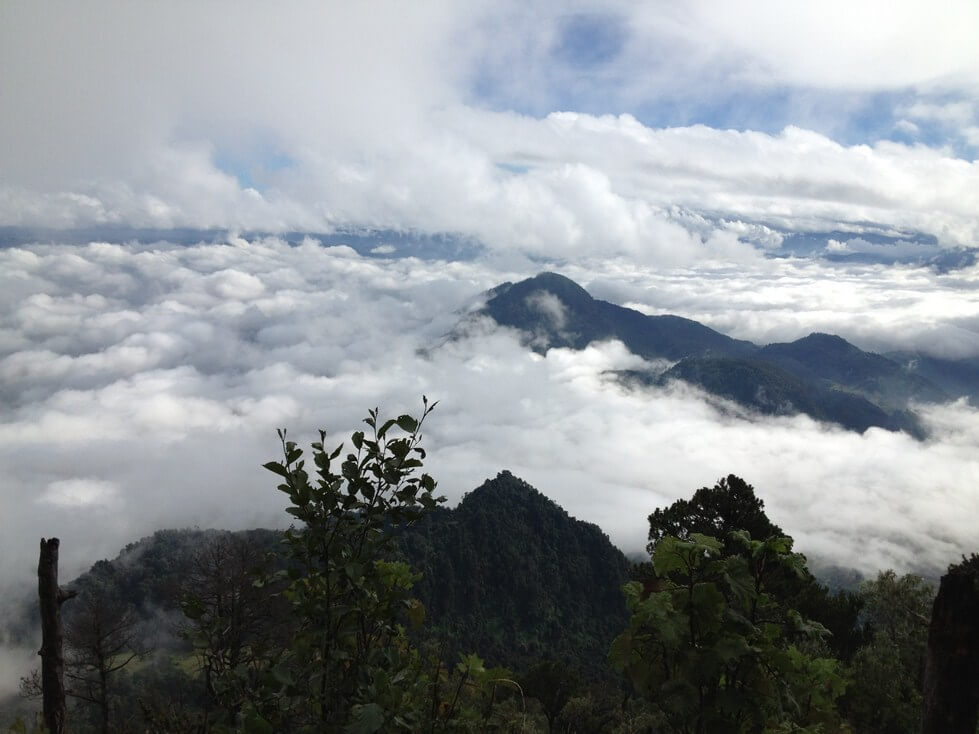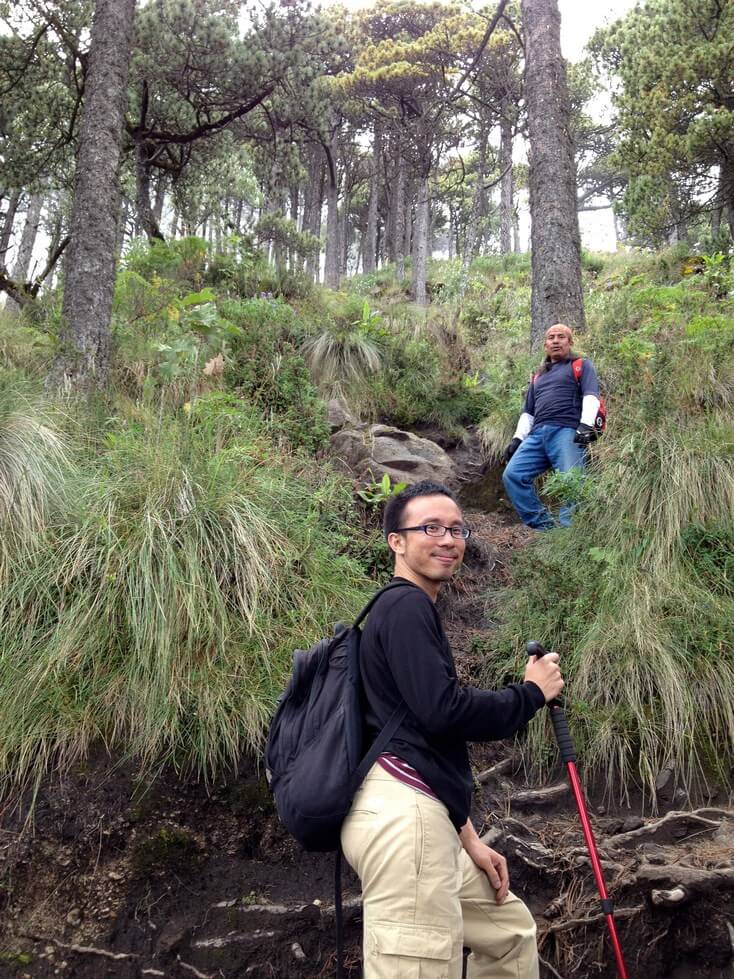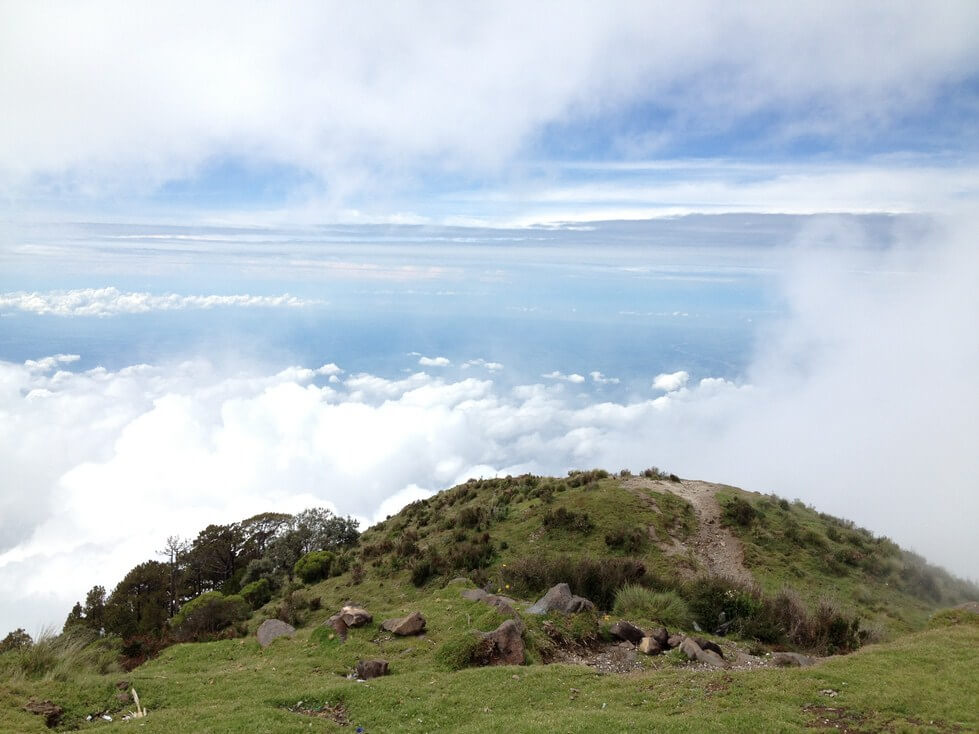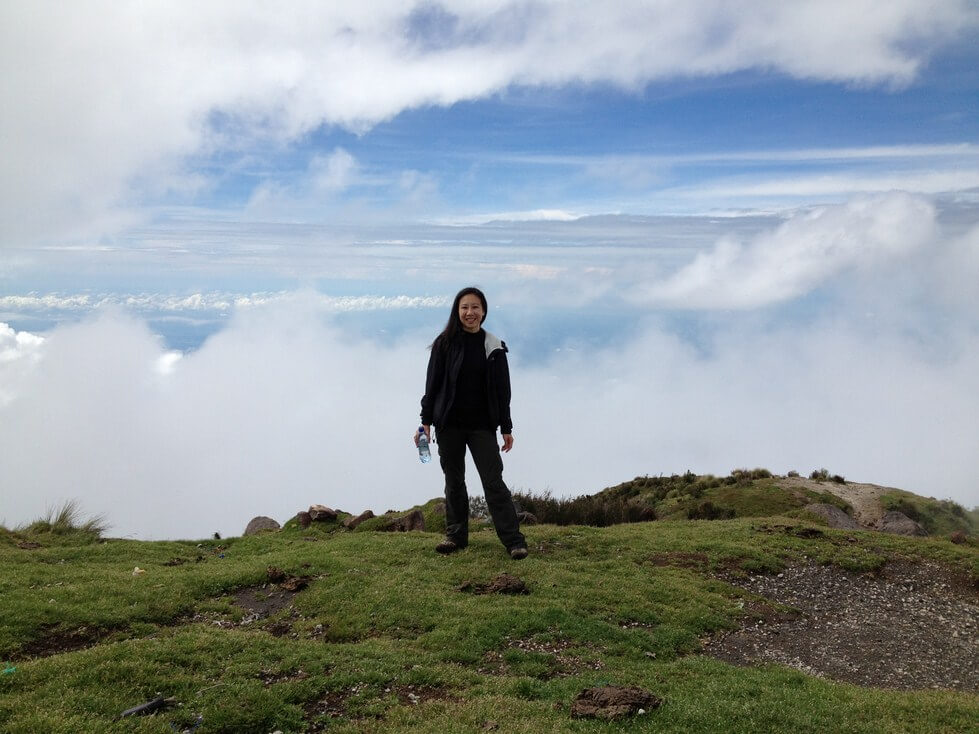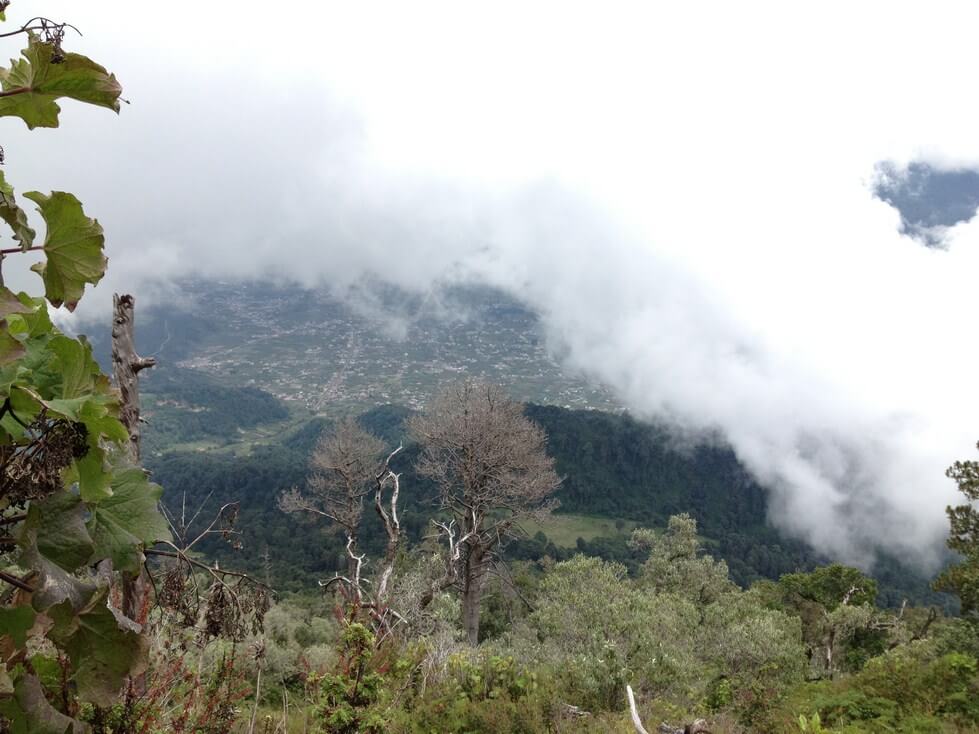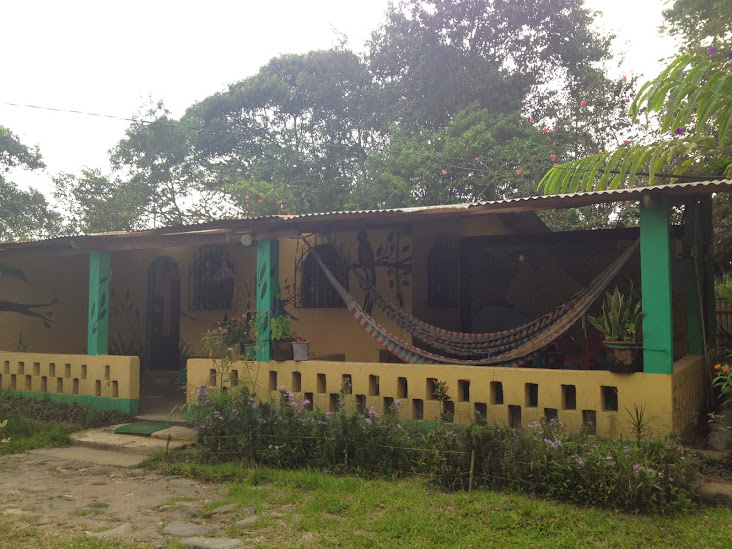
After a week in Xela, I bid my host family goodbye and headed off to La Escuela de la Montana, PLQE‘s sister location, about an hour away. Before my trip, I was pretty nervous about it. As a city girl, I knew I’d be fine in Xela, since it’s Guatemala’s second-largest city with lots of stuff to do: restaurants, cafes, shops, etc. But a week in the mountains? I was scared of bugs. And snakes. And weird birds. And strange nature sounds. And criminals who target people in remote areas. And—mostly—of going stir crazy.
Of course, soon after arriving via chicken bus with two other PLQE students, Jenny and Kathy, I learned that my fears were un poquito loco. It did take me a day to adjust to the ways of the Mountain School. But it was truly a rewarding experience and I’m so glad I went.
In addition to the school being way out in the middle of nowhere, the lifestyle is completely different from PLQE in Xela. The students live, dorm-style, in the school. Jenny and I shared a room that was meant for four people; it was fine with the two of us, but I think it would have been tight if the room was filled to capacity!

My room at the Mountain School

The school’s library was right outside my room
Classes were four hours a day in thatched huts on the school’s property. Whereas Arecely, my maetra in Xela, drilled me on Spanish grammar every day, here, my maestra, Flor, was more of a conversationalist—and a great story teller. I learned a lot just speaking with her. We traded tales of working as shoe salespeople (her in Xela, me at Bloomingdale’s) and she told me about her nutty neighbors who have several cats, dogs and more than 50 chickens. (I so would not go into that house!) In more serious topics, she also told me about a cousin who smuggled his way into the U.S., via coyotes, through Mexico, when he was just 16, to escape a gang that was after his family here in Guatemala. (Hearing stories like that—and I heard many during my time there—was so humbling.)
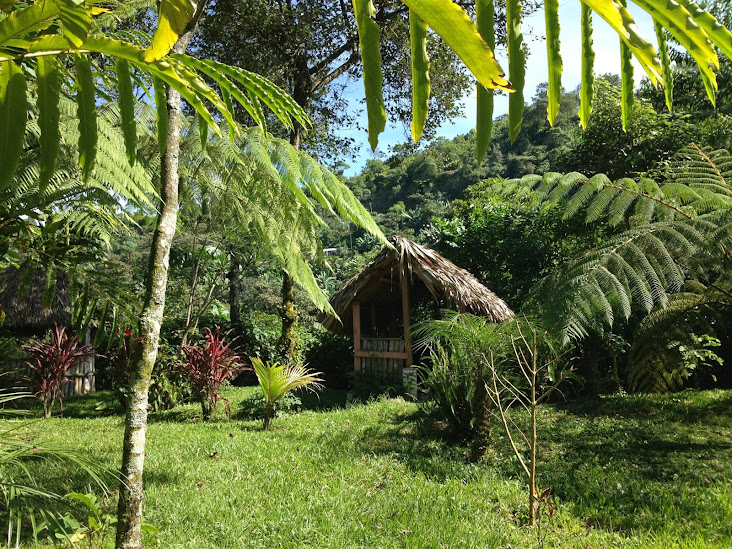
My “classroom”
After classes, we could study on the front porch or on el mirador, a perch with a great view.


The view from el mirador
The Mountain School is adjacent to three small communities: Fatima, Nuevo San Jose and Santo Domingo. Each was created when groups of families moved there from coffee fincas where they had been exploited and denied wages. Today, the communities are still very poor. Fatima, for example, is just one unpaved block long. The houses are one-story structures with tin roofs and plain cinder block walls. Many families in Fatima and Nuevo San Jose derive part of their income from the Mountain School: The women cook for special occasions, do students’ laundry and provide students with meals on a rotating basis.
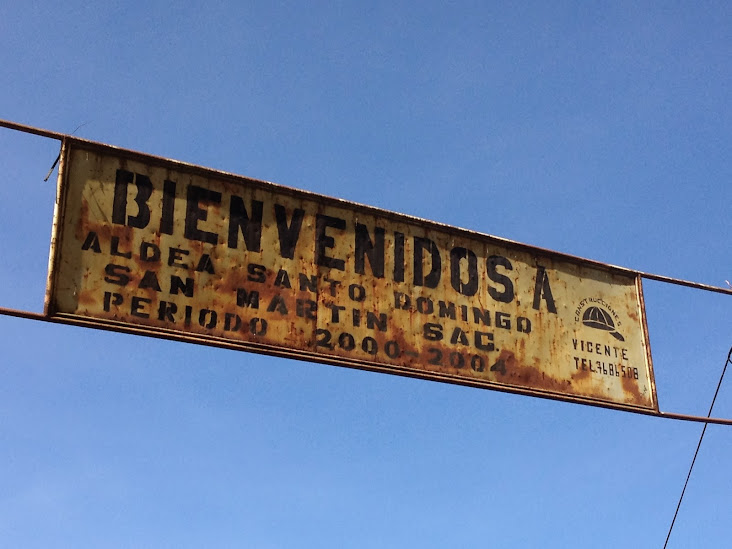
I ate all my meals with a host family that lived in Fatima. Elsa, my host mom, was just 39, but had eight kids and grandchildren, who all lived in the house. Unlike in Xela, where meals were a family occasion, here, families didn’t always eat together. The men often leave the house super-early to work as day laborers in other towns or farms—and the women get up even earlier to cook for them. I always ate at a small table by the door while one or two family members sat and talked with me. Often, it was 17-year-old Elida, the second-oldest daughter, and her son, Hamilton. Other times, it was 4-year-old Jony or 2-year-old Pablo.
I took these photos on my last day there. Most families in the communities don’t have cameras and Mountain School students are often their only means to getting family snapshots. Elsa asked me to send them to her after I was back in the States.

My host mom, Elsa, and her grandson Darvin

Jony, dressed up for Independence Day, and Pablo
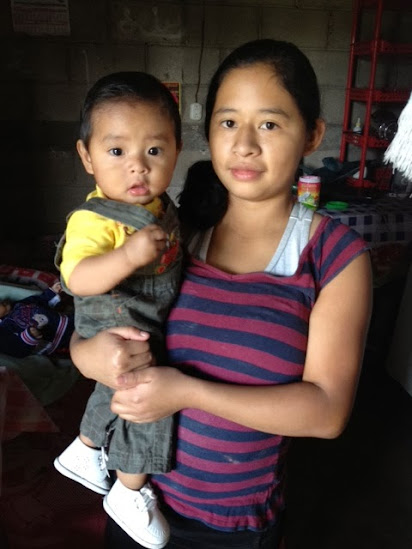
Hamilton and Elida

Meals there were simple. I loved the tortillas Elsa served with each meal—so much that I often had three, in addition to whatever the main dish was. She was a good cook, too, and I was a huge fan of her soups. But there were a few instances when I found myself craving more fruits and vegetables (like after a meal of just hot dogs and tortillas), which were a little hard to come by in the communities.
Throughout the week, I learned more about Guatemalan history and culture. On Tuesday, a local woman named Floria spoke to us students about her time in the guerilla. In 1983, the Guatemalan army killed her father and her family fled to Chapais, Mexico. But Floria wanted to avenge her father’s death, and returned to Guatemala to join the guerilla when she was just 14. She remained part of it until the peace accords were signed in 1996.
Later that day, Jorge, a longtime school employee, took us on a hike up a nearby mountain to a plot of land where he grows black beans. We also caught a glimpse of a waterfall. As we walked, Jorge told us about projects the communities are planning to bring in income: candle-making, empanada-making and, eventually, opening up a panadaria (bake shop).

Jorge on the plot where he grows black beans

Coffee also grew on the mountain

The waterfall

The view from the mountainside
Thursday morning, all of us students and teachers piled into the back of a pickup truck for a field trip to Colomba, a nearby town. This is a typical mode of transportation in Guatemala. Even though I rode in several, I never felt quite safe—I’d always try not to think of what would happen if another car hit us! Still, it was a fun way to get from place to place, especially because you had unobstructed views of the scenery.
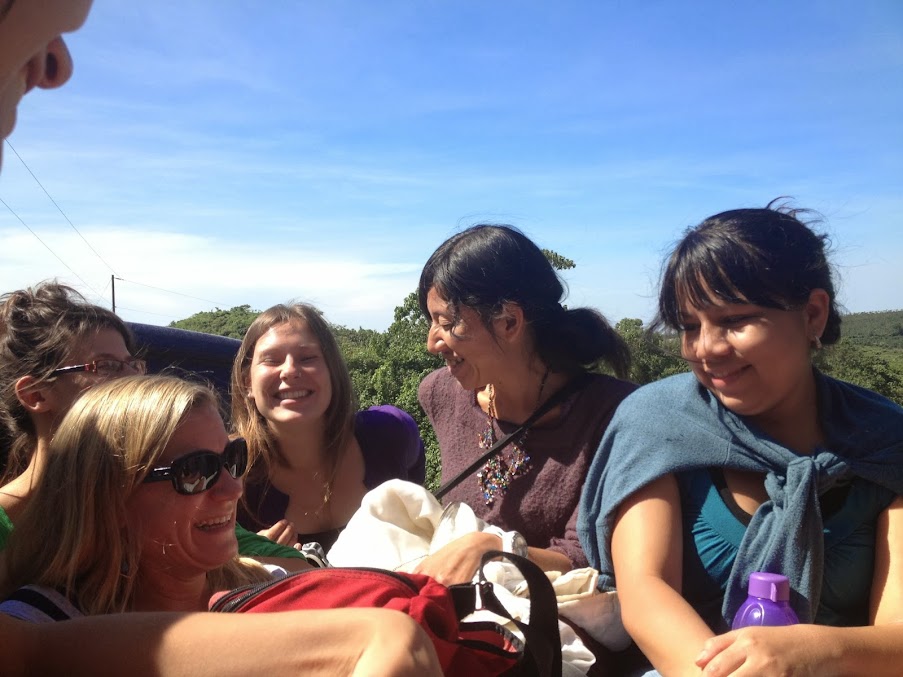
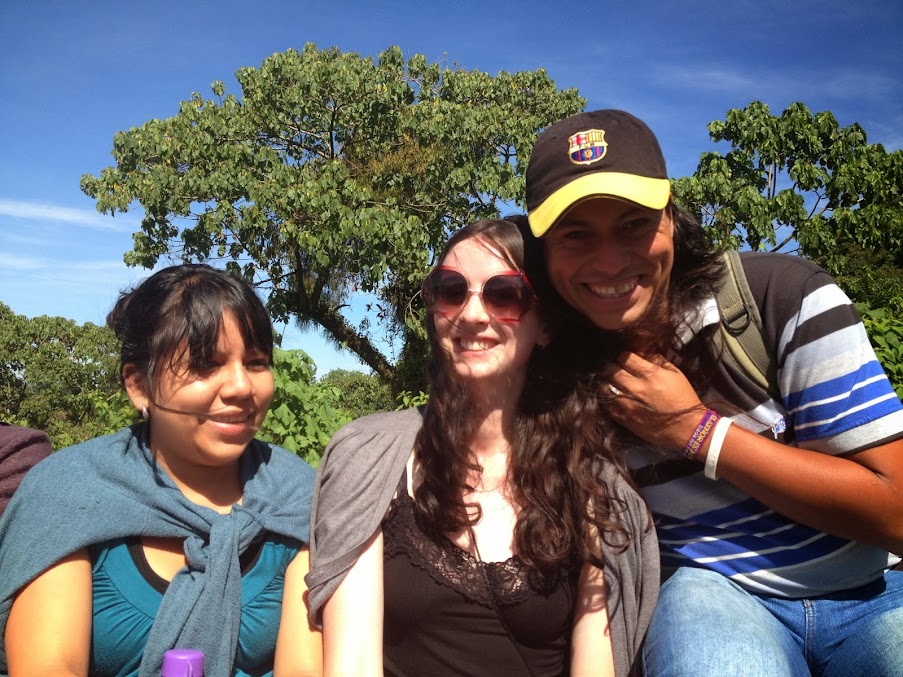


The view from the back of the pickup
In honor of Guatemala’s Independence Day, September 15, local schools had set up exhibits in Colomba’s central park, showcasing industries, food and dress unique to different towns. It was here that I first tried arroz con leche (a sweet porridge-like dessert made from, obviously, rice and milk) and pollo pepian, which is a delicious brown sauce made from sesame and pumpkin seeds and other spices.

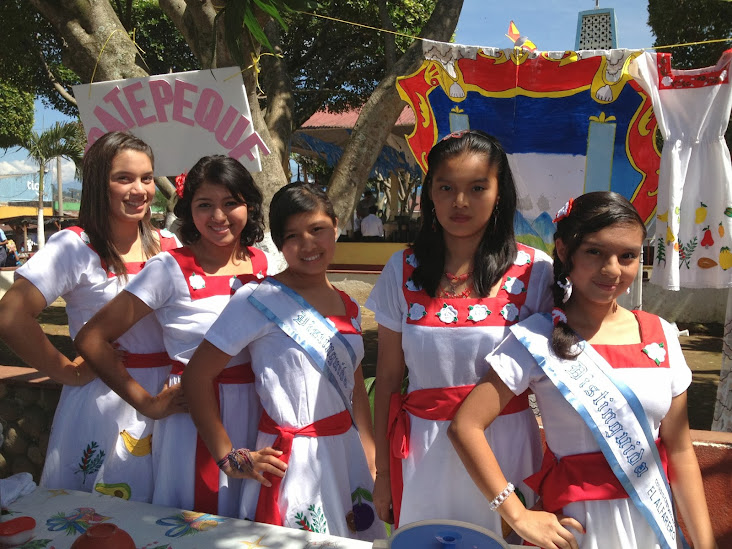
It turned out to be a food-filled day. Later that evening, much to my delight, a local woman named Josefina taught us how to make pupusas with cabbage slaw and spicy salsa. They were delicious.

Mateo grating cabbage
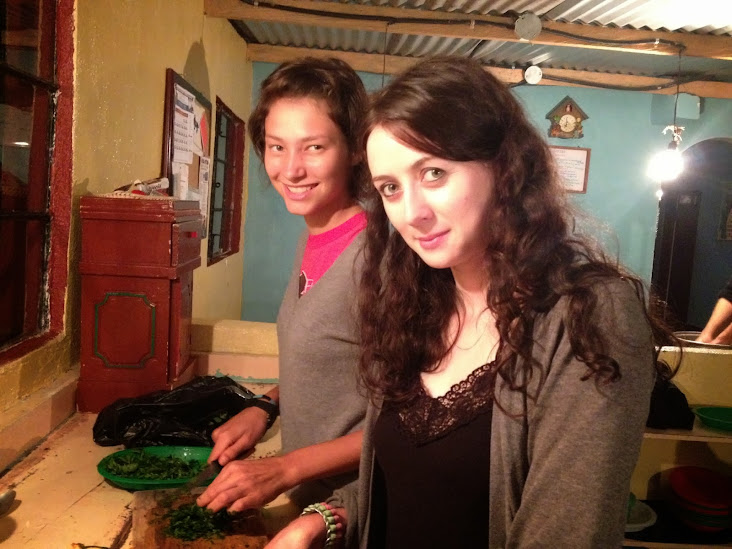
Jenny and Kathy chopping veggies and herbs
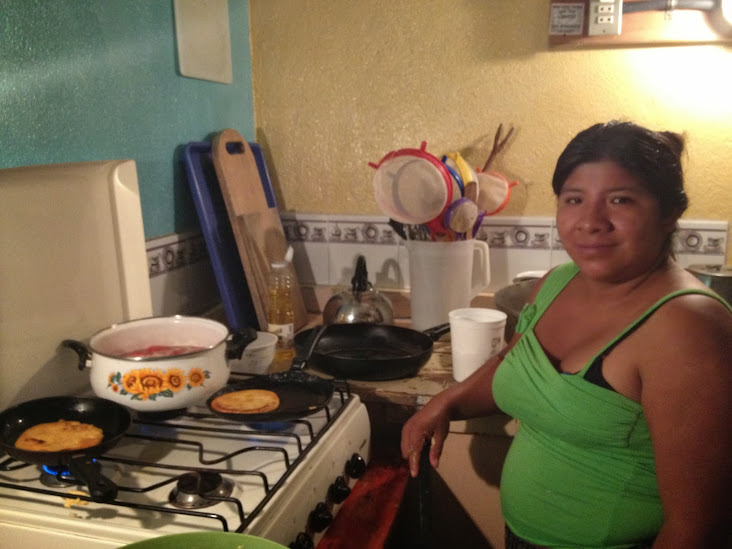
Josephina frying pupusas

Hungry, yet?
The Mountain School’s weekly graduation ceremony was on Friday afternoon. We could either cook or pay a local family to cook for us. (I chose the latter.) All of our host families came and it was like one big party. Just like at PLQE, those of us leaving that week had to share a few words of thanks, read a poem, sing a song, etc. in Spanish. I spoke about my irrational fears about the Mountain School, what I learned from my time there and just how rewarding the week had been. Then, we served our host families food. It was just a smallВ gesture, but I hope it conveyed the gratitude I felt for all their hospitality over the past six days.























